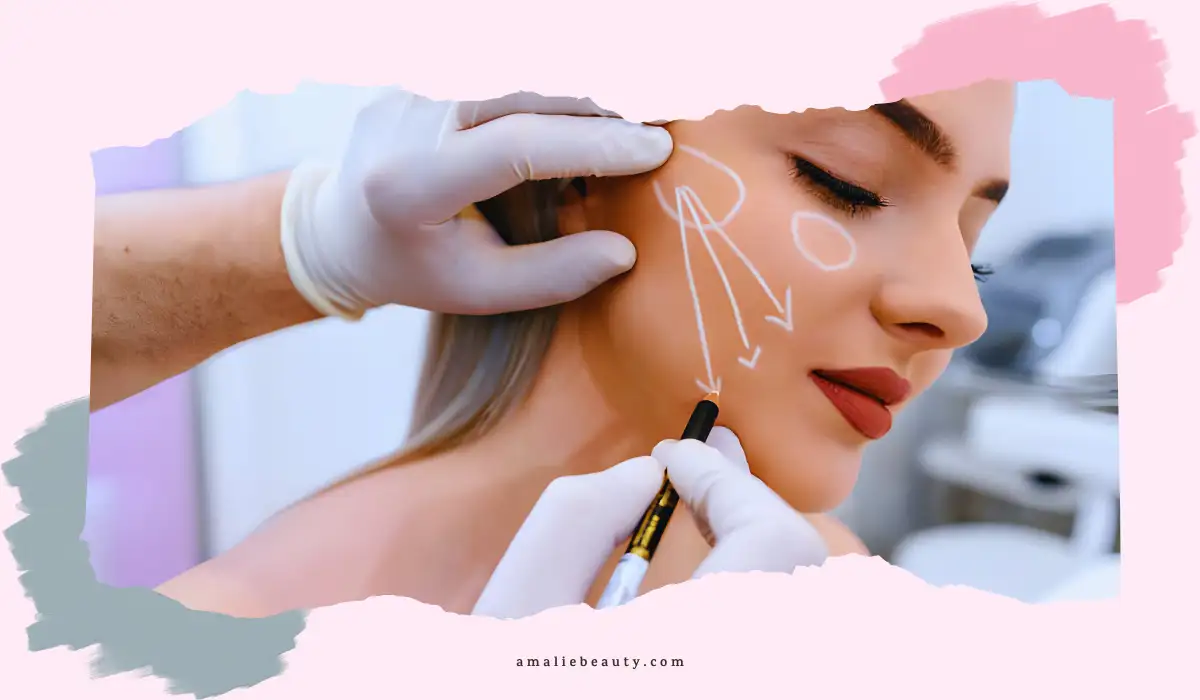As we age, our faces can sometimes reveal more than we’d like as we age. This is where a cheek lift comes in, offering a solution for those looking to regain a younger appearance.
Cosmetic surgeons are increasingly performing this popular surgery. It is designed to lift and revitalize the face. It focuses mainly on the cheeks and mid-face region.
The entire process of a cheek lift is intriguing. It goes from initial consideration through to recovery. It aims to deliver youthful results.
What is a Cheek Lift?

The cheek lift, or mid-face lift, is a specialized procedure in cosmetic surgery. It focuses on the heart of the face. It targets the cheeks. Its primary aim is to reposition sagging cheeks and redefine facial contours.
It also softens the nasolabial folds, those telltale lines that extend from the nose to the corners of the mouth. This procedure is different from a full facelift. It focuses on the middle section of the face and offers rejuvenation.
Is a Cheeklift the same as a Facelift?
A cheek lift isn’t the same as a facelift. In a cheek lift, the focus is lifting the cheek’s fat pad. On the other hand, a facelift involves tightening the face and neck muscles, removing extra fat, and repositioning the skin for a natural look. A cheek lift typically takes less time to perform than a facelift. It also has a quicker recovery period.
Procedure Details Of Cheek Lift
A cheek lift is pretty straightforward. First, the doctor gives you general anesthesia to make you sleep so you don’t feel anything. Then, they make small cuts, usually inside your mouth or near your hairline, so they’re not noticeable.
They gently lift the cheek area to make it look younger and smoother. The skin gets carefully put back and fixed in its new place.
This whole thing usually takes a couple of hours. You then wake up and begin your recovery. It’s a simple way to make your face look fresher and younger.
The duration of the cheek lift procedure can vary. It usually depends on the method and kind of cut used. But, most of the time, the surgery takes about two hours.
Before your cheek lift, tell your doctor about your health and any medicines. Stop smoking and arrange for a ride home and someone to help you after. Get your home ready for when you return, like a pleasant resting place. That’s all you need to do to prepare.
Benefits Of Cheek lift
The allure of a cheek lift lies in its aesthetic rewards. It’s like turning back the clock. The procedure lifts and revitalizes the cheeks.
It smoothens out wrinkles and redefines facial contours. These changes often bring newfound confidence and a boost in self-esteem. It’s more than just physical transformation.
The enhanced facial balance and structure can be striking. It makes the cheek lift a sought-after procedure for those chasing the fountain of youth.
Risks Of Cheek Lift
However, every coin has two sides. While infrequent, the risks associated with a cheek lift are not overlooked. These can range from surgical suspects like infection and scarring to more specific concerns.
For example, anesthesia complications. In rare cases, nerve damage can lead to changes in sensation. Some patients might find themselves at odds with the outcome. Therefore, it is essential to consult a qualified surgeon and discuss the risks and warnings beforehand.
Recovery and Outlook
Recovery is unique for each individual. In the initial weeks, expect swelling and bruising. They are unwelcome but temporary guests.
Most patients are ready to return to their daily grind within two weeks. However, the full recovery narrative can span several months. The longevity of a cheek lift’s results is impressive, often lasting many years.
However, it’s not a permanent halt to the aging process. The process continues but from a rejuvenated starting point.
When To See a Doctor?
Make sure to see your healthcare provider regularly after your procedure. They can check your healing progress and remove stitches. However, if you notice heavy bleeding, a lot of swelling, fever, strange discharge from the wound, or terrible pain, call your doctor right away. Also, if your stitches fall out early, call your doctor immediately.
A cheek lift is more than just a cosmetic procedure; it’s a transformation journey. It offers a chance to reclaim a youthful appearance. However, it demands careful consideration of the potential risks and a realistic expectation of the results.
To have a successful cheek lift, choose a board-certified plastic surgeon. They should understand your vision and guide you through the process.
FAQs
Q: How long does the pain last after a cheek lift?
A: Pain is subjective and varies. Post-surgery discomfort is generally mild and well-controlled with medication. Most patients report significant improvement within the first few days.
Q: What are the long-term effects of a cheek lift?
A: Long-term, a cheek lift can provide lasting rejuvenation. However, it doesn’t arrest the aging process. Lifestyle choices and genetics continue to play their roles.
Q: Can cheek lifts leave significant scars?
A: Surgeons aim to minimize scarring by strategically placing incisions. These scars typically fade over time and become hardly noticeable.
Q: Is combining a cheek lift with other facial procedures common?
A: Absolutely. It’s quite common to combine a cheek lift with other procedures. For example, people often pair it with eyelid surgery or a brow lift for more rejuvenation.
Q: How do I know if a cheek lift is right for me?
A. The ideal candidate for a cheek lift is someone healthy and a non-smoker. They must also have realistic expectations. Your surgeon will evaluate your facial structure, skin quality, and overall health. They will determine if this procedure aligns with your aesthetic goals.

